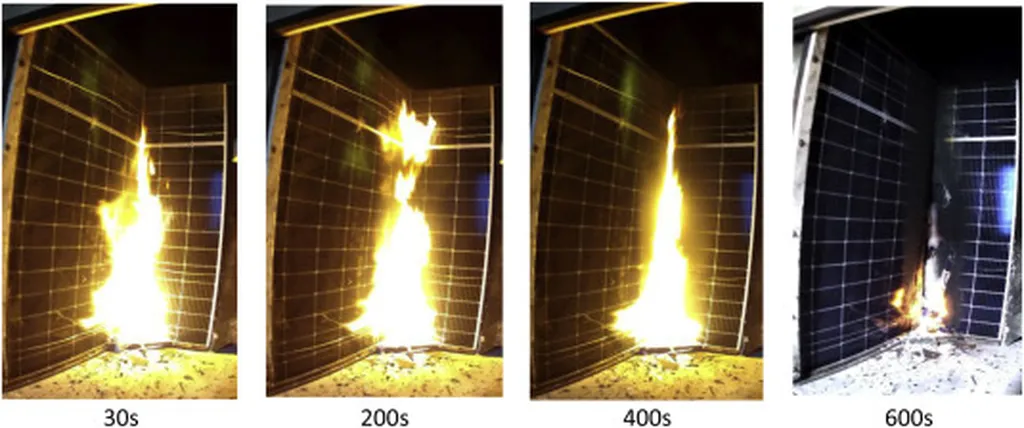In the rapidly evolving world of construction and renewable energy, a groundbreaking study is shedding new light on the performance of glass–glass photovoltaic (PV) modules under extreme conditions. Published in *Engineering Reports* (which translates to *Engineering Reports* in English), this research, led by Chiara Bedon from the Department of Engineering and Architecture at the University of Trieste in Italy, delves into the thermo-mechanical performance and structural mechanisms of these innovative PV modules during standard fire conditions.
The study is particularly relevant as the use of glass–glass PV technologies for building-integrated (BIPV) solutions continues to rise. These multi-functional components combine electrical, structural-mechanical, and architectural needs, requiring a deep understanding of their behavior under various conditions. “The optimal design of these new components is challenging and necessitates the expertise of multiple technical fields,” Bedon explains. “Our research aims to bridge this gap by providing a comprehensive analysis of how these modules perform under extreme scenarios, such as fire events.”
One of the key aspects of the study is the use of Finite Element (FE) numerical models, which were validated against existing literature. The researchers investigated a 400×400 mm glass–glass PV module with metal point-fixings under standard fire exposure, taking into account the effects of superimposed mechanical loads. The findings highlight the vulnerability of glass covers in such conditions and underscore the need for robust limit conditions for fire resistance assessment.
“Compared to structural needs under ordinary loads, the fire performance is highly demanding and requires appropriate modeling assumptions,” Bedon notes. The study addresses the thermo-mechanical response based on a combination of indicators typically used for glass or construction members in fire, including temperature peaks and differences, thermal and mechanical stress peaks, maximum deflection, and the corresponding deflection-rate.
The implications of this research are significant for the energy sector, particularly as the demand for BIPV solutions continues to grow. Understanding the performance of glass–glass PV modules under fire conditions is crucial for ensuring the safety and reliability of these systems. “This study highlights the lack of robust limit conditions for fire resistance assessment, which would be of practical and efficient use but should be properly calibrated for structural safety purposes,” Bedon adds.
As the construction industry increasingly integrates renewable energy solutions, this research provides valuable insights that could shape future developments in the field. By addressing the vulnerabilities and performance limits of glass–glass PV modules, the study paves the way for more informed design and implementation strategies, ultimately contributing to the advancement of sustainable and resilient building practices.
In a world where the intersection of technology and architecture is more critical than ever, this research offers a compelling narrative of innovation and safety, driving the energy sector towards a more secure and sustainable future.

